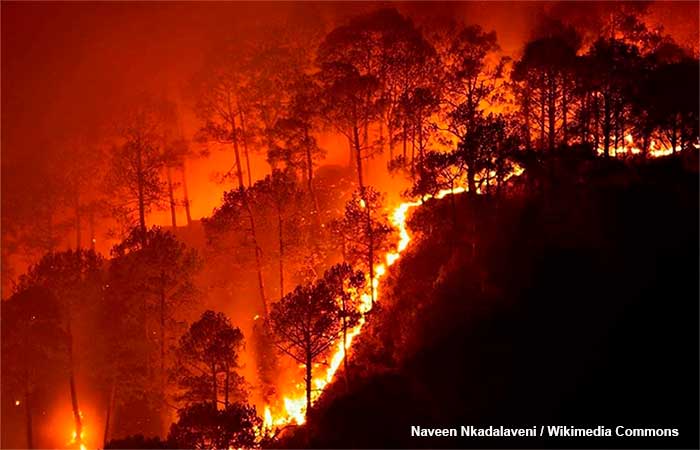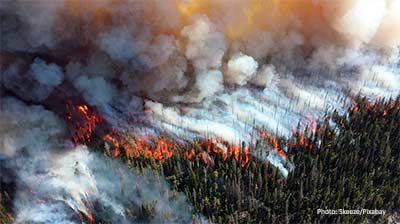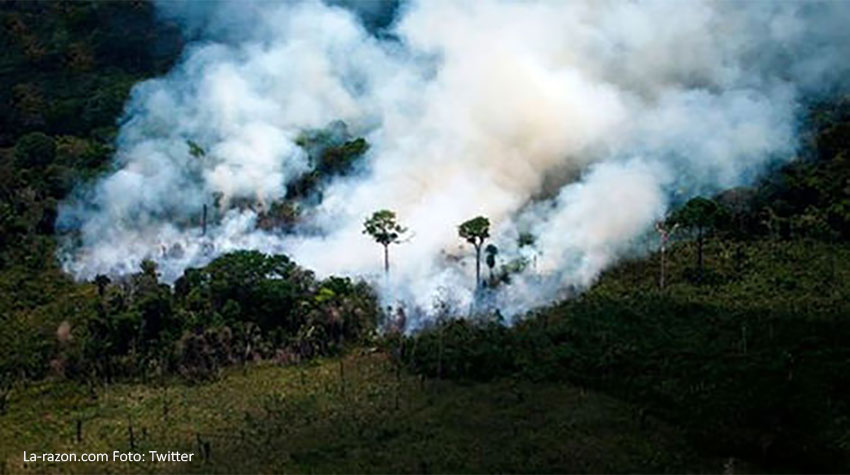FAQs about Wildfires

2. What are the causes of wildfires?
Scientists have confirmed that the main cause of mega vegetation fires is increased global warming. Warmer air causes drought, which makes trees and other plants burn more easily.
Since the hostile deforestation of the great forests of the Earth began in the 1970s, the humidity of its areas of influence has been reduced, the rains arrive late, the summers are longer and the environment is warmer than in previous times. . These are common causes that have been observed in most of the mega fires recorded in the rain forests and woodlands of the world.
Let us look at an example. The great wildfires that have occurred in California, United States, in 2019 and recent years were in the fall, after long and hot summers. This causes moisture to be absorbed from the vegetation before the rains begin. Extreme drought turns all dry material into an easy-to-ignite fuel with the slightest induction. Due to delayed rainfall in recent decades, the fire season has been extended by 75 days.
The dry seasons, coupled with the seasonal winds, have made the flames spread strongly and control them difficult. “On August 19, 2020, California Governor Gavin Newsom reported that the state was battling 367 known fires, many sparked by intense thunderstorms on August 16–17 caused by moisture from Tropical Storm Fausto. Response and evacuations were complicated by a historic heatwave and the ongoing COVID-19 pandemic. The governor declared a state of emergency in August” (Wikipedia)
In general, the most frequent causes of these mega fires are similar. Thus, we have the rays of electrical storms that impact on the dry vegetation. The falls of electricity cables that are detached from their supports by the effect of the winds. However, dry grass is susceptible to catching fire with the slightest induction, such as throwing a cigarette butt, leaving broken glass in the bush, or putting out a campfire poorly. All these carelessness, or negligent acts, can ignite a dry forest and start large wildfires. Unfortunately, there are also very frequent intentional fires caused by pyromaniacs that have caused major disasters.
We have finally stopped one of the most frequent causes, the so-called “controlled” fires in the Amazon rain forests, Borneo and other woodlands on Earth. These fires, supposedly controlled, often go out of control, causing great tragedies. In these cases, it is customary for tree loggers to burn deforestation residues as the most economical method to clear the ground of branches, roots and other remains of felled trees. This was the cause of the record fires in the Amazon rainforest in 2019.
Deforesters decreed August 9, 2019 as “the day forest burning” throughout the Amazon, which resulted in one of the largest fires in the lungs of the world in memory. The fires caused a worldwide stupor and were news in most of the planet’s media for weeks, more when it became known that the day of the burning was to “celebrate the lifting of the veto of logging and burning” in the great rain forests, by the government of Brazil.
FAQs about Wildfires
1. What is a wildfire, and which are the most affected countries?
2. What are the causes of wildfires?
3. What are the consequences of wildfires?
4. Are wildfires a cause or consequence of global warming?
5. What is the relationship between deforestation and forest fires?
6. Why is it difficult to regulate the deforestation of forests?
7. How is biodiversity affected by forest fires?
8. How does smoke from fires affect air pollution?
Other sections of Wildfires
Articles
It is no little that is at stake in the Amazon rainforest. The lung of the world should not be a token in a casino roulette. This biodiversity emporium is about 7 million km2, it is 12 times the size of Spain, it has 80,000 kinds of trees, 140,000 species of plants, 20% of the world’s species. Keep reading…
And you can also see it in…
Infographics

Photo Gallery

Video gallery



